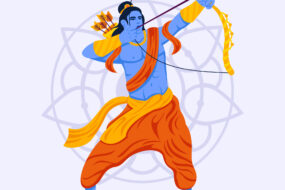
Introduction
Pongal, a vibrant and full-size harvest competition celebrated mainly inside the southern Indian states, this competition is a testimony to the rich agricultural background of the place. This 4-day festival, additionally known as the “Tamizhar Thirunaal ” in Tamil Nadu, holds a special place inside the hearts of thousands and thousands. Let’s drive into the diverse elements of Pongal, exploring its traditions, rituals, and the spirit that makes it a sincerely specific and loved cultural event.
Day 1: Honoring the Sacred Bond with Nature
The festival begins with a party on the first day. This day is dedicated to the worship of Lord Indra, the god of rain, and Bhogi, the god of harvest. The day begins with an early morning ritual in which old and unused property are amassed and burned in a symbolic gesture of letting move of the beyond and inviting the brand new. Homes are cleaned and decorated, and colorful rangolis are drawn at the entrance to invite prosperity. The first day unites the tone for the festivities, fostering an experience of renewal and religious cleansing.
Day 2: The Main Event
The second day is the most full-size and celebrated day of the competition. It marks the beginning of the Tamil month of Thai, which coincides with the wintry weather peak. The iconic Pongal dish, a special rice and lentil practise cooked in milk and jaggery, is the centerpiece of the celebrations. The traditional technique of getting ready Pongal includes boiling the aggregate in a brand new clay pot, symbolizing the abundance of the harvest. As the pot overflows, it signifies prosperity and fortune for the household. Families come collectively to cook Pongal, creating a festive surroundings full of laughter, joy, and the aroma of delicious meals wafting through the air. The act of sharing Pongal with a circle of relatives, friends, and neighbors symbolizes the spirit of solidarity and community bonding.
Day 3: Honoring Livestock
The third day is devoted to honoring the integral role of farm animals in agriculture. Cattle, mainly cows and bulls, are decorated with colorful garlands as a mark of recognition. Special prayers are provided to those animals, acknowledging their contribution to farming. In rural regions, livestock races and occasions show off the electricity and agility of those animals, adding a festive and competitive spirit to the celebrations. This day now not handiest pays tribute to the four-legged companions however it also highlights the symbiotic dating among human beings and animals within the agricultural landscape. The well-being of farm animals is important for a rich harvest, making the 3rd day of Pongal an critical element of the general competition.
Day 4: The Day of Reunion
The very last day of Pongal is an afternoon for a circle of relatives’ reunions and outings. Families collect a percentage of a festive meal and spend pleasant time collectively. Youngsters seek the blessings of elders, and visits to temples and traveler spots are not unusual. This day also includes the ritual of leaving at the back of the stays of the Pongal ceremonial dinner for birds and animals, symbolizing a sense of gratitude and obligation closer to all living beings.
Pongal in Modern Times
Urbanization and globalization have introduced approximately changes inside the manner humans take a look at the pageant. In urban regions, the conventional Pongal dish can be prepared with a modern-day twist, and celebrations may encompass cultural activities, contests, and performances. However, the essence of Pongal remains intact, with households coming together, providing prayers, and sharing the pleasure of the harvest.
Conclusion
Pongal, with its vibrant rituals and traditions, stands as a sworn statement to the cultural richness and agricultural history of the southern Indian states. The festival no longer best celebrates the abundance of the harvest but also emphasizes the values of gratitude, harmony, and community bonding. As Pongal maintains to adapt within the modern technology, it keeps its significance as a time for households to come collectively, share joy, and express gratitude for the benefits of nature. In celebrating Pongal, humans not only honor their roots but also contribute to the upkeep of a cultural legacy that transcends generations.
Search
Recent Post
Revolutionising Industries: The Impact of AI on
- January 27, 2024
- 4 min read
Navigating the Digital Landscape: The Profound Impact
- January 24, 2024
- 3 min read
When Instagram Meets Diplomacy: The India-Maldives Controversy
- January 20, 2024
- 4 min read







